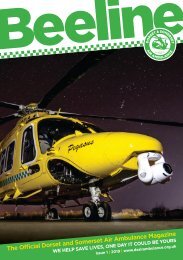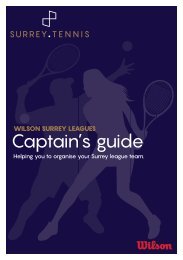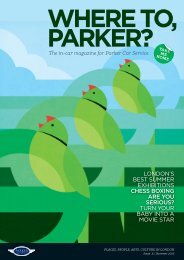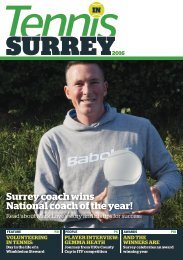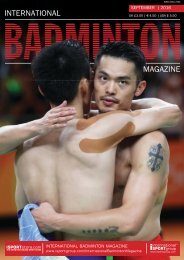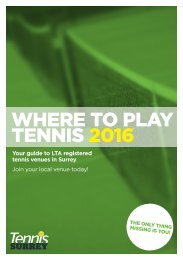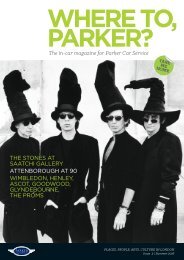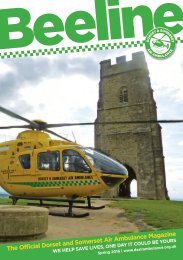Surbiton_Trophy_Programme_2017
You also want an ePaper? Increase the reach of your titles
YUMPU automatically turns print PDFs into web optimized ePapers that Google loves.
“In the 1940s the Americans<br />
used to bring their own steaks<br />
over because you couldn’t<br />
get them here because of<br />
rationing. They’d put the meat<br />
in the deep freeze at the hotel.”<br />
1947 Wimbledon doubles finalist<br />
Tony Mottram (left)<br />
Tony Mottram<br />
he rackets were wooden, the balls were white,<br />
T the clothing was modest, and the prize<br />
money was non-existent. Life for top players before<br />
tennis went professional in 1968 was radically<br />
different to today in just about every aspect you<br />
can think of: training methods, travel, prize<br />
money, diet, equipment, clothing… you name it.<br />
Here we compare the lot of modern pros to two<br />
players who competed in the 1940s – the 1947<br />
Wimbledon doubles finalist Tony Mottram (who<br />
sadly passed away last year) and the 1949/1950<br />
British champion Joan Hughesman.<br />
Training<br />
Modern pros spend almost as much time in the<br />
gym as they do on the court. Then there’s all<br />
the stretching, ice baths, massages and sports<br />
psychology. Many among the game’s elite travel<br />
with a full-time fitness expert.<br />
Andy Murray, whose fitness trainer is Matt Little,<br />
is one of the most athletic players in the world<br />
right now. His strength workout includes back<br />
squats, box jumps, lunges, split jumps, pull-ups,<br />
medicine-ball throws and core stability exercises.<br />
On the running track he does gruelling 400-metre<br />
sessions. “By the end your legs are like jelly,”<br />
he says.<br />
And his post-match ice baths are now legendary.<br />
“It’s always chilled to the right temperature, about<br />
eight degrees,” he told BBC Sport. “I do eight<br />
minutes straight. The water is moving inside the<br />
ice bath because otherwise your body starts to heat<br />
it up. I might be used to it after all this time but it’s<br />
still not nice, believe me.”<br />
Back in the days of amateur tennis, players rarely<br />
saw the inside of a gym. “In comparison to today,<br />
we did nothing. General jogging but no weights,”<br />
says Tony Mottram, the 1947 Wimbledon doubles<br />
finalist.<br />
Joan Hughesman was British champion in 1949<br />
and 1950. She says she did “no physical training at<br />
all.” “But I lived three miles away from our courts<br />
and I used to walk or run there every day,” she<br />
adds. “That kept me fit.”<br />
Match preparation<br />
Early nights, no drinking, and plenty of beauty<br />
sleep. For most top pros, life on the tour can be<br />
monastic, to say the least. Back in the 1940s,<br />
however, even at tournaments, it was quite normal<br />
to prop up the club bar until the early hours of the<br />
morning.<br />
“Tennis was very social,” says Mottram who<br />
reached the quarter-finals of Wimbledon singles<br />
in 1948. “When you packed your case you made<br />
sure you had your tennis rackets and then the next<br />
most important thing was your dinner jacket. We<br />
were expected to socialise and we did.”<br />
“If you liked parties, there were plenty of<br />
parties,” Hughesman remembers. “Some of the<br />
male players drank and gambled a lot. Especially<br />
on the French Riviera.”<br />
www.LTA.org.uk/aegonsurbitontrophy @<strong>Surbiton</strong><strong>Trophy</strong> 21




